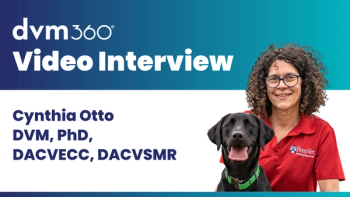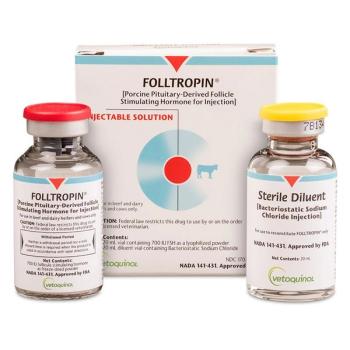
Four actionable Fear Free tips from Temple Grandin, PhD, and Marty Becker, DVM

Renowned animal behaviorist Temple Grandin, PhD, joined “America's Veterinarian” Marty Becker, DVM, onstage to share how a Fear Free approach can help give animals “a life worth living”
At Fetch Nashville 2025, day 2 kicked off with a keynote address from Temple Grandin, PhD, and Marty Becker, DVM. The pair walked through the history of Grandin’s innovations in livestock handling, explaining how those lessons could be applied to improve small animal veterinary practice. As the founder of Fear Free, Becker framed her advice in terms of practical ways veterinary professionals can positively affect the emotional well-being of companion animals.1
“I want the world to know that animals have emotions and feel pain,” Grandin said, with an emphasis throughout the talk about how animals perceive the world around them in a way that humans tend not to intuitively understand. Because of that disconnect, Becker and Grandin pointed out a number of improvements most practices can make to ensure a positive experience for patients.
1. Block visual stressors
Animals encode fear in sensory terms such as sight, sound, and texture, Grandin said. Becker shared that he has observed many practices have holding cages in full view of the treatment area. In these cases, he said, the animals are emotionally impacted by observing what happens to other patients, especially if they are handled roughly. He recalled a particular instance, saying of the animal onlookers watching a patient be restrained: “Every pet was in a defensive position. All their feet pulled in…their tail tucked, and their ears back.”
Countering this is as easy as installing a curtain in treatment to obscure the view, rather than remodeling the clinic. As Grandin bluntly put it, “Just put a curtain up there.”
Another important visual tactic is to differentiate exam rooms, if at all possible. If every consult room looks identical, an anxious animal may refuse to enter a room where it previously had a negative experience. Grandin recommended creating unique visual cues—paint, decor, or layout—that allow you to rotate pets into a different room. “If this animal had a bad experience in one [room], you don’t put it back in here,” Grandin said.
2. Minimize fear of falling
Fear of falling is a primal concern for all animals. On exam tables and clinic floors, slippery surfaces exacerbate anxiety. Becker said, “[An] animal’s No. 1 fear from birth is a fear of falling. What have we done all our life? Lift them off their feet and put them on an elevated, slippery table.”
To address this, clinics can use nonslip runners. Grandin described the effect of speckled, glossy flooring, which pets perceive as ice: “They think this is ice to them. It looks shiny and slippery.”
3. Counter-condition common fear stimuli
One of the most effective ways to transform a pet’s response is to pair a neutral or previously threatening stimulus with positive reinforcement, the two said. Two prime examples from the session:
Syringe desensitization: Needles and syringes often elicit fear because animals have a painful experience with them. “Give everybody…a syringe to take home, and…stick a piece of cheese, piece of baloney, put peanut butter on it. They want to think that they have positive associations with that syringe,” Grandin explained. By offering high-value treats on a capped syringe at home, pets learn that the syringe predicts reward, not pain.
Ambient sound recording: The noises of clippers, vacuums, and other treatment-area sounds can trigger anxiety. Grandin suggested recording these sounds and providing the audio to pet owners. At home, owners can play the recording while offering treats, establishing a positive association before the next clinic visit.
4. Seek leadership buy-in and allocate training time
Implementing Fear Free methods involves a learning curve. Grandin said, “While you’re learning, it’s probably going to be slower.… No pain, no gain.” Grandin and Becker said practice owners and head veterinarians must champion Fear Free protocols. Without leadership commitment, isolated efforts by technicians or associates often stall. Grandin also noted that, initially, exams may take an extra 20 to 30 seconds per patient. After consistent practice, typically 2 to 3 weeks, staff become proficient, and procedures resume normal speed. Grandin said, “You’ve got 2 to 3 weeks where it’s going to be slower, and then once you learn it, you love it.”
Takeaway
As Grandin and Marty Becker explained, relatively simple modifications can drastically reduce fear responses in the clinic. With leadership support, a brief adjustment period, and an earnest commitment, veterinarians can ensure every animal enters the clinic confident that Fear Free will guide its care.
Reference
Becker M, Grandin T. The top 5 seismic things happening in animal care you need to know about and take action on. Presented at: Fetch dvm360 conference; May 31, 2025; Nashville, TN.
Newsletter
From exam room tips to practice management insights, get trusted veterinary news delivered straight to your inbox—subscribe to dvm360.






